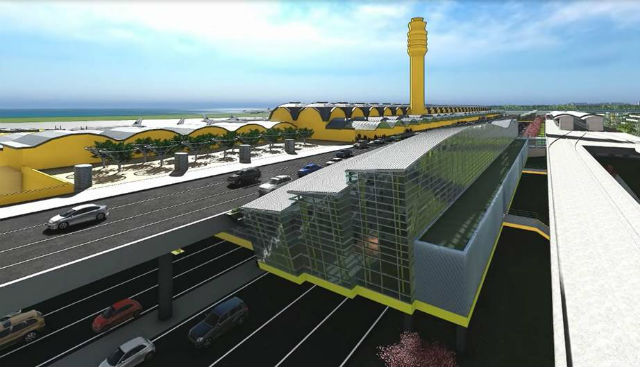American Airlines and the operator of Ronald Reagan Washington National airport are working hard to prevent the congestion chaos that has plagued construction work at New York LaGuardia.
Work to build new security checkpoints at the close-in Washington DC airport will close lanes on the airport's arrivals level, creating concerns of significant traffic congestion during construction at the Fort Worth-based carrier's hub.
"I don't think we're going to see a LaGuardia here," says Radney Robertson, managing director of American's Washington National hub, on the sidelines of an event to open the airline's new maintenance facility on the south side of the airport today.
Construction of the new security checkpoints at the airport is scheduled to begin later this year and open in 2020. Road closures related to the project are only forecast to be in place for the first year.

MWAA
Work on a new $4 billion central terminal building, also known as terminal B, at LaGuardia began in 2016. However, construction road closures soon created traffic jams that extended onto a nearby highway, forcing some passengers to exit taxis and walk on the road's shoulder to make their flights.
Officials from the Metropolitan Washington Airports Authority (MWAA) have visited LaGuardia to learn from the lessons there and avoid them at Washington National, says Paul Malandrino, vice-president and manager of the airport at MWAA, at the event.
"We don't have the massive, massive construction that LaGuardia has," he says. He notes the entire terminal complex at the New York airport is being rebuilt whereas the work at National is only a terminal modernisation and expansion.
The $1 billion Project Journey programme includes the new security checkpoints that will allow National Hall in terminal B/C at Washington National to move inside security, as well as a new 14-gate north commuter concourse for American's regional operation.
The checkpoints will be built on the level of existing bridges between the terminal and Metro station in space between the arrivals and departures roadways. To do this, MWAA must close lanes on the arrivals roadway to regrade the approach road and build supports for the new structure.
MWAA is encouraging passengers to use Metro during construction and plans to begin a communications blitz through social media and on its website to educate travellers about the closures and update them on conditions, says Malandrino.
American is preparing for "changes in how we do things" at National during construction, says Robertson. In addition to the roadway congestion concerns, the airline will have to manage a shifting array of remote parking positions for its regional flights as the new concourse is built in phases on the site of the existing apron.
The carrier has installed two dual jetbridges, which can handle two aircraft at one time, and reduced the number of 50-seat regional jet operations to mitigate the construction impact on its operations, he says.
American will only have 12 remote aircraft parking positions, instead of 14, during work on the concourse that is due to open in 2021.
The new maintenance facility, located in historic hangar four at Washington National, is one of the enabling projects for the new concourse. The commuter facility will be built atop American's former maintenance space in hangar 12, which will be demolished by November.
The facility can handle two Airbus A320 family or Boeing 737 family aircraft, double the number in hangar 12, for overnight line maintenance work, says Paul Wroble, vice-president of line maintenance at American, at the event.
American is the largest carrier at Washington National operating half of the airport's 29.8 million seats in 2016, FlightGlobal schedules show. Southwest Airlines is the second largest carrier by seats with a 15% share followed by Delta Air Lines with a nearly 14% share.
Source: Cirium Dashboard























